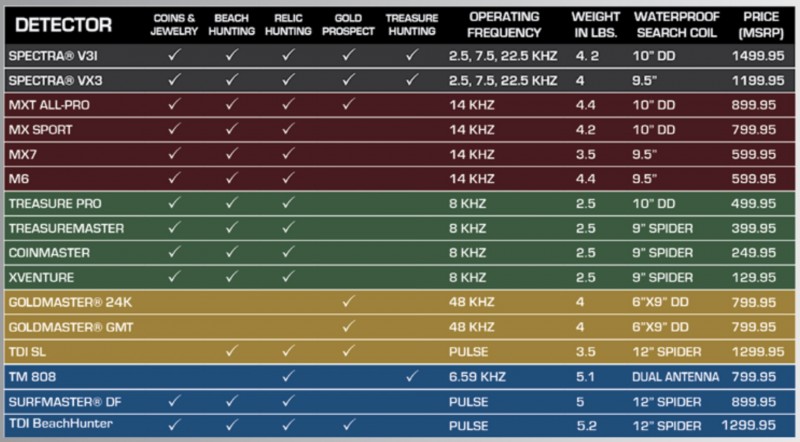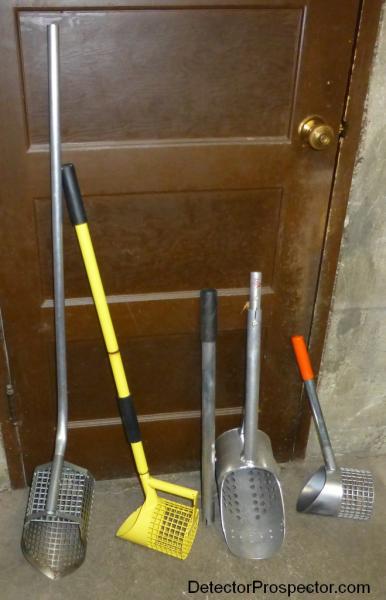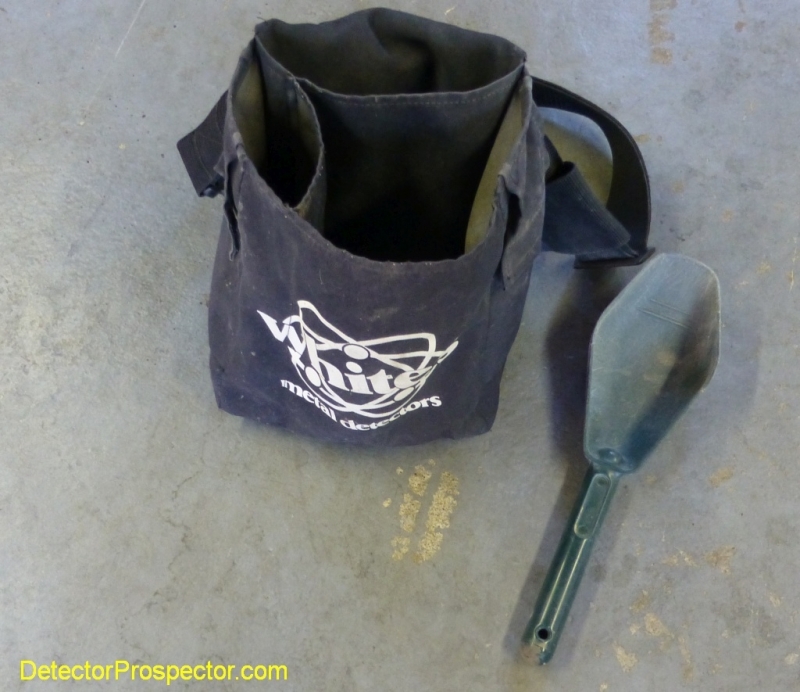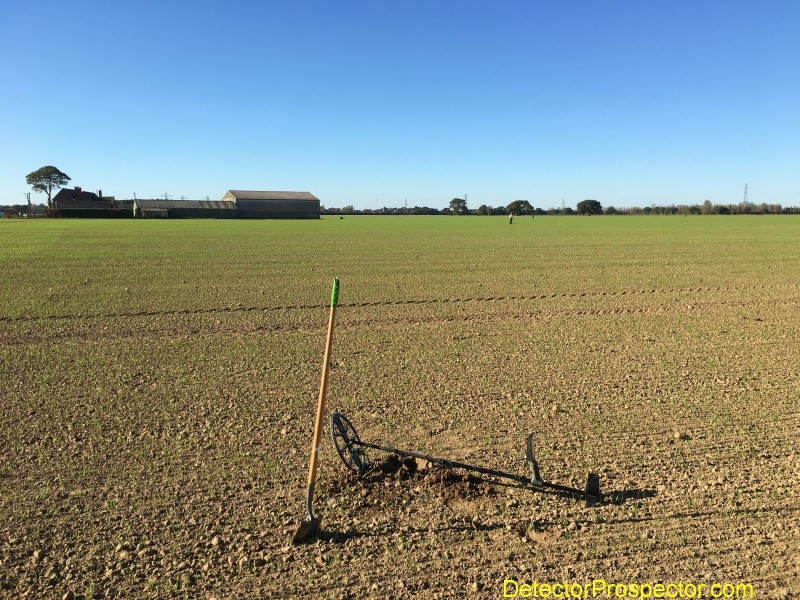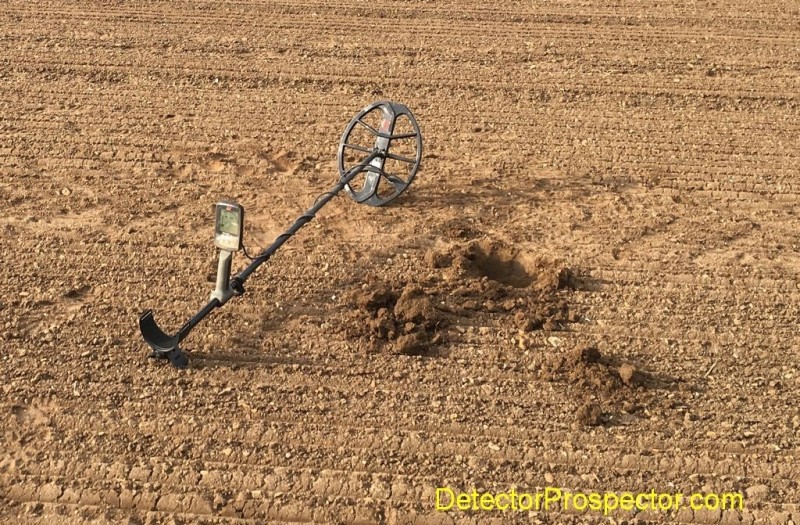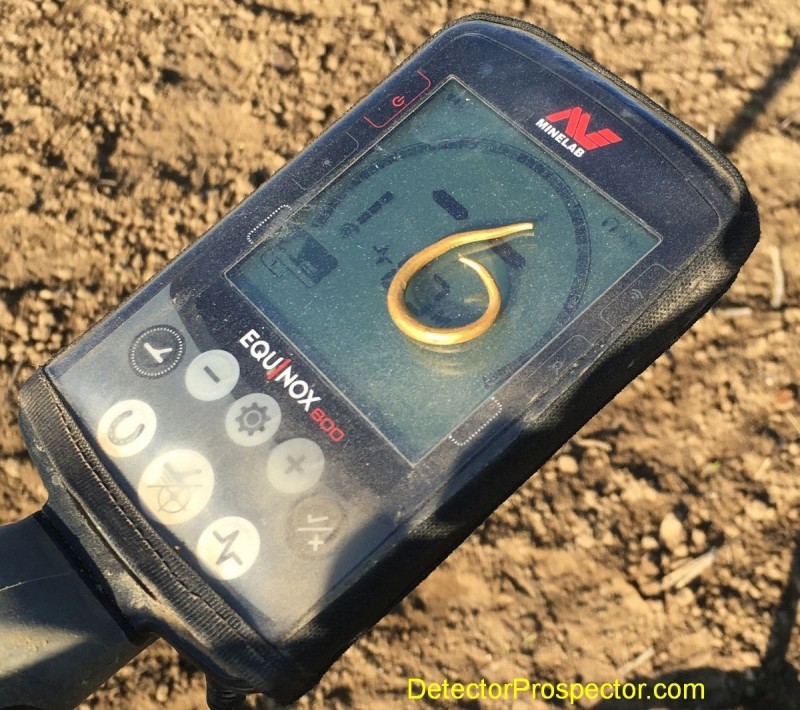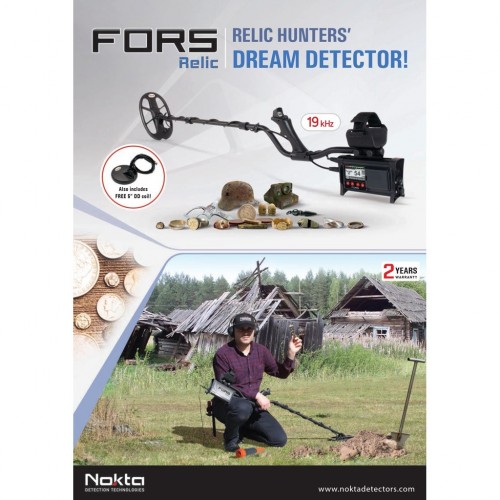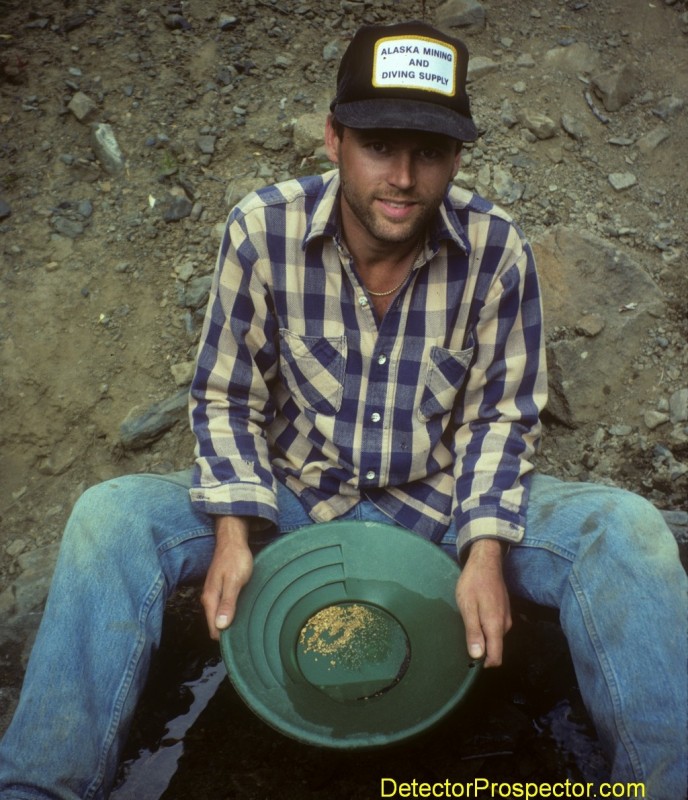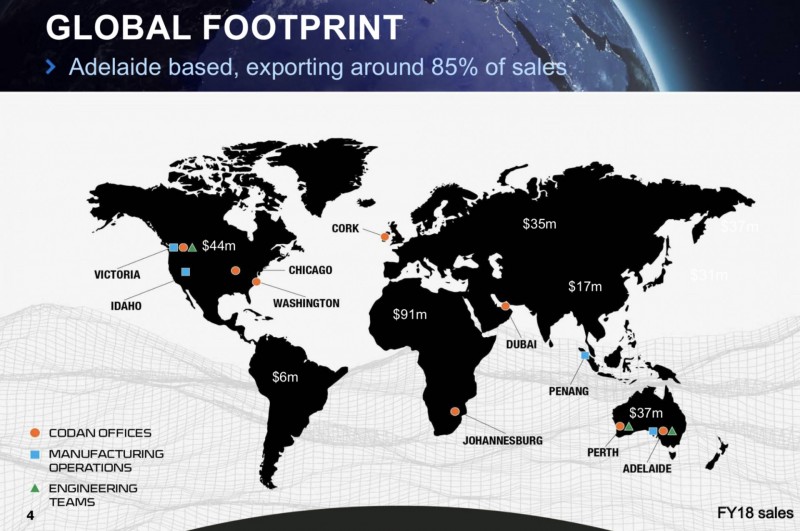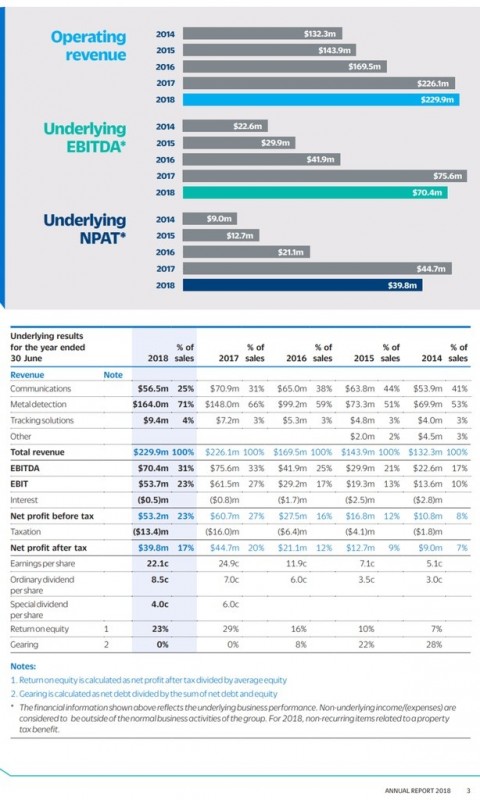-
Posts
19,800 -
Joined
Content Type
Forums
Detector Prospector Home
Detector Database
Downloads
Everything posted by Steve Herschbach
-

Good Morning, Long Time Lurker With Forum Question
Steve Herschbach replied to Maximus's topic in Meet & Greet
It’s a hard balance to cram everything in without getting too busy so it’s unfortunately easy to miss stuff. I need to put in a more comprehensive help system so thanks. Your question will make that happen. ? -

Good Morning, Long Time Lurker With Forum Question
Steve Herschbach replied to Maximus's topic in Meet & Greet
It depends on what device you are using. PC and tablets look for “Mark Site Read” in upper right area. On a phone go to the menu options in upper right (three horizontal bars) and when you click there you will see a big button that says “Mark Site Read”. I use it myself from time to time to “clear the board”. Thanks for coming out of the shadows, welcome to the forum! ? -

White's 2019 Catalog Available Now
Steve Herschbach replied to Steve Herschbach's topic in White's Metal Detectors
Problem is $289 is probably cost. I have done the old “we are not making money selling one but let’s make it up in volume” routine myself. Unless you have economy of scale that a product like this will never reach it just eats you alive as a business. The GMZ in my opinion would have been a much more viable product with a iron disc option, and I agree with you about the SGT for the same reason. Good luck selling a $360 beep-dig detector. -

White's 2019 Catalog Available Now
Steve Herschbach replied to Steve Herschbach's topic in White's Metal Detectors
The Surf PI is in the chart in the catalog but otherwise got left out. I thought it interesting the Sierra Gold Trac is back as a full time addition to the lineup. White’s 2019 Detector Models -

XP Deus Hf Elliptical Coil Or?
Steve Herschbach replied to Bretski's topic in Metal Detector Advice & Comparisons
I thought the elliptical was terrific on small gold.... That being said the 9” HF coil is about as good, with a probable edge on larger nuggets due to the larger coil area. -

Moore Creek Adventures
Steve Herschbach replied to alaskaseeker's topic in Detector Prospector Forum
All I can say George is that you sure helped make up one hell of a crew. Seems like there was nothing we could not get done when we put our minds to it. Moore Creek was an amazing journey. I am glad it gave you a place to heal... a great big hug to you my friend! And of course you go and find perhaps the most spectacular specimen found at the mine. Far from the largest but lots of museums would be happy to display it. -

XP Detector Team At California Gold Mine
Steve Herschbach replied to Steve Herschbach's topic in XP Metal Detectors
Maybe email them or ask on their channel? -

XP Detector Team At California Gold Mine
Steve Herschbach replied to Steve Herschbach's topic in XP Metal Detectors
Maybe he actually prefers the Garrett and XP is cool enough to not care. To me that makes it more real than putting a gun to a persons head that they must use only Team gear no matter how trivial. I don’t and never will only use stuff from one supplier. -

Chris Gholson Detects Arizona
Steve Herschbach replied to Steve Herschbach's topic in Detector Prospector Forum
Kind of sweet seeing dealers defending people who are theoretically competition. -

Chris Gholson Detects Arizona
Steve Herschbach replied to Steve Herschbach's topic in Detector Prospector Forum
It’s a knee jerk reaction to the way these guys get treated elsewhere John. They don’t know you quite as well as the rest of us It does show how words said in jest can go sideways on the internet. The sad thing to me is some dealers are the most knowledgeable resources we have. Yet they tend to get driven off forums. Some deserve it for being too aggressive, but often it is other dealer dirty tricks at work. Don’t think it does not happen. Anyway, all knowledge is welcome here as are all dealers as long as their first goal is to inform. My theory is any dealer working to simply inform deserves some business. I consider myself lucky if I can get people like JP, Doc, Gerry, Rob, Chris etc to stop by and visit us. In that regard this thread is awesome! -

I Got Yer Newbie Question Right Here!
Steve Herschbach replied to jinmon's topic in Metal Detector Advice & Comparisons
See what happens when you have a forum full of great people?! ? I am taking the question to mean that the detector choice is done, and it sounds like multipurpose type detecting. I use the same basic tool set for most everything, the main thing that changes is the digging tool. All detectors should normally have a scuff cover on the coil. Minelab and Nokta/Makro coils come with scuff covers, but most everyone else comes without. I use them. I do believe in taking the best care of my detector’s possible. With the fast release of machines these days it is likely that I will sell whatever I have just prior to warranty expiration. I want the max I can get so I am not going to beat my gear up. I treat detector’s like expensive electronics because in many cases they are. I always apply some sort of screen saver first thing out of box. And then I usually use at least a pod cover in addition to the screensaver (otherwise dust in the pod cover will scratch the screen). Larger body detector’s I may also wrap the control box. I am pretty much boycotting dry land machines that weigh over 4 lbs and waterproof machines that weigh more than 5 lbs. Anything heavier a harness or bungee support system can save shoulders, etc. On dry land I alway use my long time favorite Whites trash/treasure pouch which has room for little things like emergency toilet paper and a $1 rain poncho. I love the pouch so much White’s discontinued it so I bought a couple extras when I had the chance. There are many other options and people have all kinds of preferences. Some like mesh bottoms to let sand out but I dig too much tiny stuff for that. But even then you can put the tiny good finds in a separate compartment or container. Whatever. The main thing is have a good way to collect and remove trash. In my case the belt and pouch support storage of things that might otherwise go in a small rucksack. The pouch is on the belt, my digging tool and pinpointer go in pouch. A loop on the belt holds a pick if need be. For park detecting and digging deep coins I use a standard Lesche digging tool and will forever. No need to change... it’s always got the job done. For jewelry and clad byproduct I use a large screwdriver and I generally prefer that type of detecting to deep plugging. I always use a pinpointer in parks and sometimes elsewhere. I have had good luck with Garrett pinpointers though it’s obvious from online watching that they have a failure rate. I had one with a bad button... still have it for some reason. But my Garrett Carrot is flawless and easy. I also like my Fisher F-Pulse but it seems it had a lot of teething pains for early buyers. Hopefully the bugs are worked out now as it is a good pinpointer. For most people I think the Garrett is stil just a tiny bit more straight forward in use (the Fisher has deep menu options via pressing that one button different ways. You can get into there and screw it up easier than is possible with the Garrett. Nugget detecting not much changes.... just digging with a pick now and using a plastic nugget scoop for recovery. I add vials to the pouch for small gold and a GPS to the kit. I have a rucksack more for emergency supplies and water etc. for that type of detecting. See the link for that stuff. The beach I am either mask and snorkel or walking the beach. In either case my belt now has a small mesh goodie bag with a magnet in it to capture hair pins / ferrous trash that might slip through. Wading or on beach I have a couple digging scoops I use depending on how hard the bottom is. Basically a long handle heavy duty stainless steel scoop for rocky bottoms, and a lighter duty scoop for sand. See the one on far right and far left in photo below. That’s most of it for me and all kinds of options offered by others on this thread to consider. Thanks everyone! -

Simple 14.8v Battery Pack For TDI Beach Hunter
Steve Herschbach replied to Tony's topic in White's Metal Detectors
Thank you Tony... l love people posting relevant links. Forums are to inform, and in my opinion link bans are counter to that intent. The only requirement on these forums is that the links have to be at least remotely relevant to our subject at hand. So yes, happy days and a pat on the back. Thank you for sharing all your knowledge ?? -

Best Thing About The TDI Beachhunter...
Steve Herschbach replied to Steve Herschbach's topic in White's Metal Detectors
The TDI SL for me anyway is a well balanced 3.5 lbs that is extremely comfortable to swing. There was just not perceived need for a hip mount option. The older TDI big box units and now BeachHunter are simply heavier units to the point where a hip mount option was considered desirable. That, and the TDI SL is just using one of White’s off the shelf housings used in prior models. Once you get down to about two pounds or less in the arm the whole nose heavy thing is truly not a big deal. Every Deus sold is nose heavy yet everyone raves about the ergonomics. No different once you get that weight off the arm here... it feels so much lighter you really don’t notice the nose heavy aspect. -

Steve's 2018 UK Adventure
Steve Herschbach replied to Steve Herschbach's topic in Metal Detecting For Coins & Relics
Finally.... Here are the settings with an explanation of my rationale for using them... EQUINOX and a visit to the UK February 04, 2019 03:57pm I made my first visit to the U.K. in 2010 in search of Celtic gold. I attended a Minelab conference just prior to that visit and was asked what detector I was going to use. A Minelab was not on my list. Why? At that time, Minelab was synonymous for “low and slow” detecting, with slow being the main problem. The farm fields I was to hunt in England were huge, and in my mind, ground coverage was paramount. I wanted a detector that I could swing fast all day long, something light in weight and with a fast recovery time. Fast forward to 2018 and a return trip to England for another go at those huge farm fields and Celtic gold. This time I was packing two Minelab Equinox detectors, one with the stock 11” DD coil, and the other with the new 15” x 12” DD coil. My first trip had not produced the Celtic gold I was seeking, and this time I was going all in with the Minelab Equinox in the hope that it would do the trick for me. How does a person determine what settings to use on a detector when going to a totally new location, one where both the soil conditions and trash/treasure mix are unfamiliar? It appears that most people seek settings on the internet that serve as a starting point at least. This is certainly one approach and one that can work well lacking any other way to go. I personally rely on my detector telling me what settings it wants to use. Rather than tell it what to do, I listen to what the detector is telling me and go from there. I do this by seeking to balance two different aspects of the detector that matter most to me. First, there is the amount of noise or chatter I want the detector to generate in response to the ground. The number one choice I need to make up front is in determining what Field Mode I wish to use, i.e. Park Mode, Field Mode, Beach Mode, or Gold Mode. In general, I would rate the modes going from “hottest” to “most well behaved” as follows: Gold Mode Park & Field Mode 2 Park & Field Mode 1 Beach Mode 1 Beach Mode 2 The Gold Modes on the Equinox 800 (not available of Equinox 600) are the most powerful modes, but also the hardest modes to tame. Beach Mode 2 on the other hand is designed to deal with both saltwater and mineralized soil, which in turn means it is a very well behaved mode. It also is the least powerful mode in terms of its ability to find small low conductive targets. Choosing the proper mode is a matter of balancing how sensitive you want the Equinox to be to the very smallest and very deepest targets against undesirable characteristics like ground noise, electrical interference, and sensitivity to small trash items. I was going to be detecting large fields in England, and so my focus went immediately to the Park and Field modes. Gold Mode was likely to be too noisy and require too much target analysis for efficient hunting. Beach modes on the other hand are best reserved for the worst ground conditions. Park Mode 1 and Field Mode 1 Multi-IQ processes a lower frequency weighting of the multi-frequency signal, as well as using algorithms that maximize ground balancing for soil, to achieve the best signal to noise ratio. Park Mode 2 and Field Mode 2 are using a higher frequency “weighting” that makes those two modes more sensitive overall and in particular on smaller low conductor targets. It also means that Park 2 and Field 2 tend to have more inherent ground response, which in turn makes those two modes a little more prone to background chatter. I did some brief experimenting and determined that Park 1 had all the sensitivity to small items I could wish for while being smoother/less noisy than the Park 2 and Field 2 alternatives. As far as choosing between Park 1 or Field 1 there is in my opinion no discernible difference between Park 1 and Field 1 except for those inherent in the differing presets. The same goes for Park 2 and Field 2 – once differences in the presets are accounted for, to me they are as near to being the same as to not. Once in Park 1 it was a matter of getting the sensitivity and recovery speed to where I wanted them. In general, I try not to stray too far from the presets unless there is a very good reason. I experimented with the ground balance, recovery speed, and iron bias settings. I could not convince myself that manually setting the ground balance was any better than using the factory default, and so I went with the factory default. In theory lower recovery speed and lower iron bias will both add sensitivity and better define targets audibly, but again the factory defaults worked well. My goal was not to create a detector that was operating at its most powerful. In order for this to work, I have to slow way down to accommodate things like a slower recovery speed and analyze lots of weak signals. No, my desire was not to create a super powerful detector, but an efficient detector for covering large areas. This means setting the detector up to give the best signal possible on desired targets, while reducing unwanted signals and interference. The one item that required the most experimentation and thought was where to set the discrimination control. I solved this by digging all non-ferrous targets (target id 1 and higher) for the first day and a half. For U.K. purposes, I decided the discrimination control is mostly a size and roundness filter. Target id 1 did turn up some coke, a hard, shiny coal like material. Target id 1 though 6 in general produced all manner of very small metal targets, mostly lead and small copper bits, but also occasional aluminum bits. What was interesting was that items of equal size produced very different target id results depending on how round the item was. This is most apparent on hammered silver coins. These coins come in all sizes, and many were cut into halves or quarters to “make change”. A pie shaped quarter hammered will produce a lower target id number than an identically sized but round coin. This “roundness bonus” can easily add five to ten target id numbers to targets, moving items that would normally read in the single digits into double-digit target id numbers. I rapidly determined that digging target id number 6 and lower produced vastly larger amounts of small lead and copper targets with the most common possible good target being a quarter or an eighth of a thin silver coin. There are other small possible good targets that could be recovered in this range, including small gold targets. My time was not unlimited however, and so I decided that I would notch out target id numbers 1 though 6 and only accept 7 and above. This was to be my normal setting for most of my field detecting. However, I also like to hear everything a lot of the time. That includes even the ferrous response, because very often I am looking for places with increased target density, and ferrous indications can reveal an old habitation site worth paying attention to. Switching to all metal response is as easy as hitting the “horseshoe” button, so that when desired I could bring target id 1 – 6 back into the equation, along with all ferrous responses. I prefer most of the time to hunt in 50 tones. However, I did go into the advanced tone settings, and lowered the T1 ferrous tone from 12 to 4 to make the ferrous responses as quiet as possible but still audible to my ear. It is impossible to adjust the non-ferrous tone volumes independently while in 50-tone mode, but the T1 ferrous tone volume can be set as desired. To sum up, my settings were the Park 1 defaults with a couple modifications: Park 1 Frequency Multi Noise Cancel 0 (adjust as needed) Ground Balance Manual, 0 Volume Adjust 20 (adjust as needed) Tone Volume 12, 25, 25, 25, 25 (Steve 4, 25) Threshold Level 0 Threshold Pitch 4 Target Tone 5 (Steve 50) Tone Pitch 1, 6, 12, 18, 25 Reject –9 to 1 and Accept 2 to 40 (Steve Reject -9 to 6 and Accept 7 to 40) Tone Break 0, 10, 20, 30 Recovery Speed 5 Iron Bias 6 Sensitivity 20 (Steve 22 to 25) Backlight Off I generally hunted with target ID 1 through 6 eliminated, but often opened it back up in areas with sparse targets, or for areas where I just “had a feeling” and wanted to sample the lower target id range. My main goal was Celtic gold, and tests I performed on a few Celtic gold quarter staters (a small gold coin) gave readings as low as target id 9 but most in the “nickel range” of 12 – 13. A full stater tested out at a solid 20 – 21 reading. I was not worried about missing gold coins or any coins for that matter that were fully round in shape by accepting target id 7 and higher but I was passing on piles of very small and hard to find targets. This is purely a gamble and a judgment call on the part of the operator. In any circumstances where time is unlimited I advocate digging either all targets, or at a minimum all non-ferrous targets. The problem always revolves around limited time and how many targets a person can afford to dig in a limited period. In other words, I am not presenting these as my “magic settings” for the U.K. and in fact, this is just the opposite. I hope that by explaining my rationale for the settings I chose and why I chose them, that you will see that settings are very much an individual preference. What are technically the “best” settings from a pure performance standpoint may not be the best settings for a person with a bad back, for instance. We all have differing physical limitations and differing ability to dig large amounts of trash without becoming discouraged. The controls on our detectors allow us to adjust not just for maximum performance but also for maximum fun, and we all have to determine for ourselves where the lines are drawn, especially as regards discrimination settings. Halfway into my trip I got a nice little 7-8 reading, at the lower end of my discrimination range. There was nothing special to indicate that this was not yet another small piece of lead, and so you might imagine my shock when an oddball piece of gold popped out of the ground. It was gold all right, but not the Celtic gold coin I was half expecting. Instead, it appears I found a much rarer item, a possible “votive offering” to the gods for a good harvest. This open-ended 6.8 grams of gold gave a weaker signal than one might expect, because it is not round and responds more like a gold ring with a broken solder point. My settings were still good enough to make the find, but if the weight had been less or the shape a little different I may have missed it. In the end, I made the right call, and my faith in the Minelab Equinox was rewarded with Celtic gold! To sum up, these settings are a good set of well-behaved settings for an Equinox beginner in the U.K. The settings minimize noise and reduce the digging of hard to locate smaller items in favor of more substantial targets. Yet these setting will find plenty of very small items also. I offer them merely as a starting point, to be adjusted as the operator sees fit to find their own preferred settings. When in doubt hit that horseshoe button to hear all targets. This works well to better define targets reading ten or lower or any “iffy” targets that seem to have a ferrous component. Such are the risks and rewards of metal detecting. At the end of the day, it is up to each of us to decide where to draw the line between trying to dig all metal in the ground versus our available time and physical limitations. I hope this article helped clarify how at least one detectorist makes those choices in order to help you make yours. Happy Hunting! -
It’s been a lot of years since I last met Chris. At one time he was very visible in the prospecting world but I think family life caught up with him. Very nice to see him out and about again in this excellent video! Though I barely recognized his new furry look. Published on Feb 3, 2019 - “Come join me in the remote goldfields of Arizona as I revisit one my favorite old patches and pull off a few more gold nuggets with my metal detector.”
-
Thank you Tom I have all these old photos never seen by anyone but me. That is a real waste in my opinion and the tale is just a way of presenting the photos in an interesting way. It was an enjoyable stroll down memory lane for me so I am pleased so many of you enjoyed the story. I am very fortunate to have grown up in Alaska before it became as domesticated as it is now. The oil pipeline in many ways marked the end of the “old Alaska”.
-
Wow Don, nice to hear from you. I hope Jesse is doing well also... best wishes!
-
Thanks Jim... you are too kind Thank you for your own contributions to the forums. And nice picture frame! How the forums do from here on out is up to the members. I have 90% of the framework built so now people either post or they do not. My role now is mostly as background admin..... with an occasional tale. I am as curious as any to see how it goes.
-
The Nokta/Makro FORS Relic was introduced in 2016 and discontinued in 2018, replaced by the Nokta/Makro Anfibio 19. The FORS Gold+ is a 19 kHz VLF metal detector aimed primarily at gold nugget, relic, coin, and jewelry detecting. "Built on the famous FORS platform, the FORS Relic offers new features and unbelievable unmasking capabilities for relic and coin hunting. Operating at 19 kHz frequency, the FORS Relic features 6 search modes, iMASK (Intelligent Masking), Tone Break, Iron Volume and can easily be used on beach, mineralized ground, and rocky areas which are problematic for most detectors. FORS Relic's superior discrimination ability will enable you to detect relics and coins missed by other detectors in the trashiest sites and in iron contamination. In addition, the waterproof search coils make FORS Relic the best choice for metal detecting on the beach or in rivers" Source: FORS Relic Brochure Nokta FORS Relic metal detector Dual LCD Display Digital Target ID & ID Masking 6 Search Modes Adjustable Tone Break Adjustable Iron Volume Ground Tracking Auto & Manual Ground Balance Pinpoint & Depth Indicator (cm/inch) Frequency Shift Built-in LED Flashlight Waterproof Search Coils Easy Use Ergonomic Design Long Battery Life 10 Languages Nokta/Makro FORS Relic Brochure Nokta/Makro FORS Relic Owner's Manual Nokta/Makro Metal Detector Forum
-
-
This is not a rod I would use on the beach for the very reason you mention. These shafts use orings to snug the cam locks and sand in them from constant beach use would not be a good idea.
-
We sold piles of those old "Alaska Mining & Diving Supply" baseball caps back in the day. Collectors items now!
-
Thanks for relating a great adventure but do be safe down there. I am not referring to Mexico but you guys and your wild riding habits. No amount of gold is worth getting busted up over! Nice gold.... you are way ahead of me for the year.
-

Minelab 2018 Results
Steve Herschbach replied to Steve Herschbach's topic in Minelab Metal Detectors
-
Minelab is a division of a larger publicly traded company, Codan. That means we can peek at annual reports to learn a bit about the metal detecting world as far as size and sales. The competition is all privately held so numbers are hard to come by. From Codan 2018 Annual Report (October 2018): "In FY18, Minelab had another exceptionally strong year, with revenue of $164.0 million which delivered a segment contribution of $64.1 million. While sales of our GPZ 7000® top-of-the-range gold detector remain strong, they are being complemented by significantly higher sales of the new Gold Monster® and SDC 2300® detectors in Africa. Minelab’s base business is comprised of recreational products sold into Australia, Europe and the USA, a level of gold detector sales into Africa, Asia Pacific and Latin America and sales of countermine products (detecting and clearing improvised explosive devices) globally. In the past, Minelab has had base-business sales in the range of $85 million to $95 million per annum. The combination of the EQUINOX® coin and treasure product release, an expanded gold detector range and Minelab’s entry into new geographic markets has increased the base business to around $110 million per annum. As was the case again in FY18, periods of stronger demand for gold detectors in Africa and new product introductions can push these revenues significantly higher. African demand continues to be driven by the superior performance of our products rather than gold surges. Existing customers are upgrading their GPX® gold detecting equipment and new customers are buying the entry-level Gold Monster®. It has also been pleasing to see a resurgence in demand for the SDC 2300®, a detector that is exceptionally good at discovering fine-particle gold. This changing sales mix has further diversified the business but has resulted in lower average margins for our gold detector products in Africa." FY18 SUMMARY Another exceptionally strong year, highest sales ever Successful release of the revolutionary EQUINOX® coin and treasure detector Diversified gold detector sales in Africa, less reliance on GPZ 7000® Delivered a significant order for the countermine F3 Compact™ detector Continued investment in new product development FY19 OBJECTIVES Maximise and diversify gold detector sales globally Expand distribution in Latin America through our new Minelab presence in Brazil Continue to expand our retail distribution channels in USA and Europe Complete the Countermine dual-sensor development programme "While we are confident of continued success in FY19, the unpredictable nature of our sales into Africa makes forecasting difficult for this business. In the past, Minelab has had base-business sales in the range of $85 million to $95 million per year. The EQUINOX® product release, coupled with an expanded gold detector range and Minelab’s entry into new markets, have increased this base-business by more than 20%, to around $110 million in sales per annum." and the part we all want to read: "Minelab continues to invest in product development for recreational markets and has a number of new, improved metal detectors in the pipeline." click for larger version...

